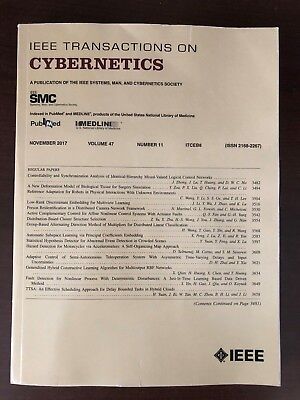Leveraged Matrix Completion With Noise
IF 10.5
1区 计算机科学
Q1 AUTOMATION & CONTROL SYSTEMS
引用次数: 0
Abstract
Completing low-rank matrices from subsampled measurements has received much attention in the past decade. Existing works indicate that有噪声的杠杆矩阵完成。
在过去十年中,通过子采样测量完成低秩矩阵的研究受到了广泛关注。现有研究表明,在一些限制性假设条件下,理论上需要 O(nrlog2(n))个基准点才能高概率地完成一个 n ×n 的秩为 r 的噪声矩阵:1)底层矩阵必须是不连贯的;2)观测结果遵循均匀分布。限制性的部分原因是忽略了每个元素的杠杆分数和甲骨文信息的作用。在本文中,我们利用杠杆分数来描述每个元素的重要性,并大大放宽了以下假设:1) 不对底层低阶矩阵施加任何其他结构假设;2) 被观测元素通过杠杆分数适当地依赖于其重要性。在这些假设条件下,我们设计了一种能揭示每个被观测元素 "重要性 "的非均匀/有偏取样程序,而不是均匀取样。我们的证明得到了一种新方法的支持,这种新方法基于 Golfing 方案给出了充分的最优条件,这对更广泛的领域具有独立的意义。理论研究结果表明,即使观察到的条目受到少量噪声信息的干扰,我们也能从大约 O(nrlog2 (n)) 个条目中恢复出一个秩为 r 的未知 n×n 矩阵。实证结果与我们的理论完全一致。
本文章由计算机程序翻译,如有差异,请以英文原文为准。
求助全文
约1分钟内获得全文
求助全文
来源期刊

IEEE Transactions on Cybernetics
COMPUTER SCIENCE, ARTIFICIAL INTELLIGENCE-COMPUTER SCIENCE, CYBERNETICS
CiteScore
25.40
自引率
11.00%
发文量
1869
期刊介绍:
The scope of the IEEE Transactions on Cybernetics includes computational approaches to the field of cybernetics. Specifically, the transactions welcomes papers on communication and control across machines or machine, human, and organizations. The scope includes such areas as computational intelligence, computer vision, neural networks, genetic algorithms, machine learning, fuzzy systems, cognitive systems, decision making, and robotics, to the extent that they contribute to the theme of cybernetics or demonstrate an application of cybernetics principles.
 求助内容:
求助内容: 应助结果提醒方式:
应助结果提醒方式:


